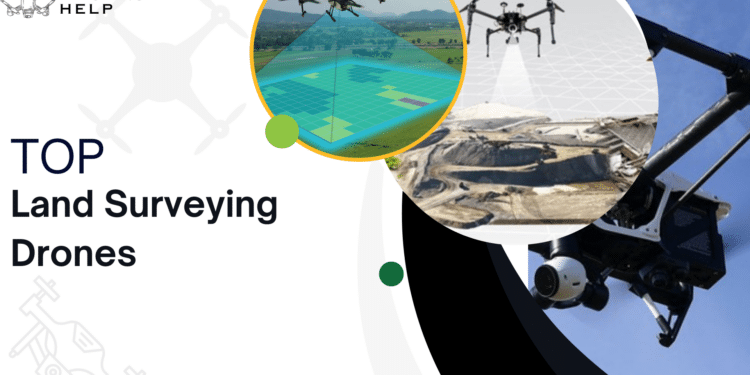Have you ever wondered why drones have become essential for land surveying? In the vast skies above industrial landscapes, land surveying drones shine brightly, revolutionizing the construction industry with enhanced efficiency, accuracy, and speed. No longer limited to traditional ground equipment, surveyors and project managers are embracing these aerial marvels for tasks like topographic surveying and 3D mapping. Drones transform how professionals capture and analyze data, providing more detailed insights and precise measurements. In this article, we’ll explore the best drones for land surveying, showcasing top models on the market and demonstrating how they improve site mapping and streamline construction workflows. Join us as we uncover the remarkable impact of drones on the future of surveying and construction. In this article, we’ll explore the best drones for land surveying, highlighting some of the top models available on the market today. We’ll delve into how these drones improve site mapping, streamline construction workflows
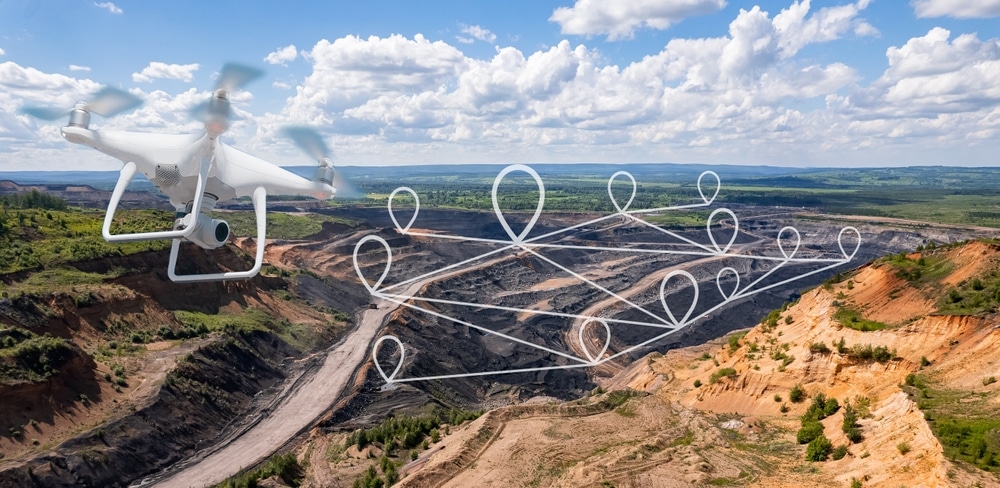
The Shift from Traditional Survey Methods to Drones
Paving the way for a high-tech leap, drones replaced the slow grind of traditional surveying with speed and efficiency. Before drone technology became prominent, traditional survey techniques were labor-intensive and time-consuming. Surveyors would spend hours setting up equipment, such as theodolites and total stations, to capture terrain data. While traditional methods still have their place, land surveying drones have introduced a new level of efficiency. By taking to the skies, these drones can collect high-resolution images and generate 3D models of landscapes in a fraction of the time, making surveying with drones an appealing option for various industries.
The use of land surveying drones not only enhances 3D mapping but also facilitates the creation of point clouds—collections of spatial data points that represent the landscape’s geometry. This data, coupled with drone topographic mapping, allows for unparalleled accuracy in mapping and surveying, leading to detailed site surveys and more informed decision-making.
Why Choose Drones for Land Surveying?
When it comes to drone surveying for construction, land surveying drones offer multiple advantages. They provide real-time data that can be analyzed on-site, reducing the time it takes to process information and make adjustments. Additionally, drones for land surveying can cover expansive areas without requiring a surveyor to be physically present in potentially hazardous locations.
The captured data from land surveying drones is not only more comprehensive but also allows for improved flight path control. This enables drones to fly over pre-determined areas, capturing data at consistent intervals and angles. The result? A richer and more precise topographic surveying process that can generate 3D models of sites, complete with contour lines and elevation details.
Top Land Surveying Drones in the Market
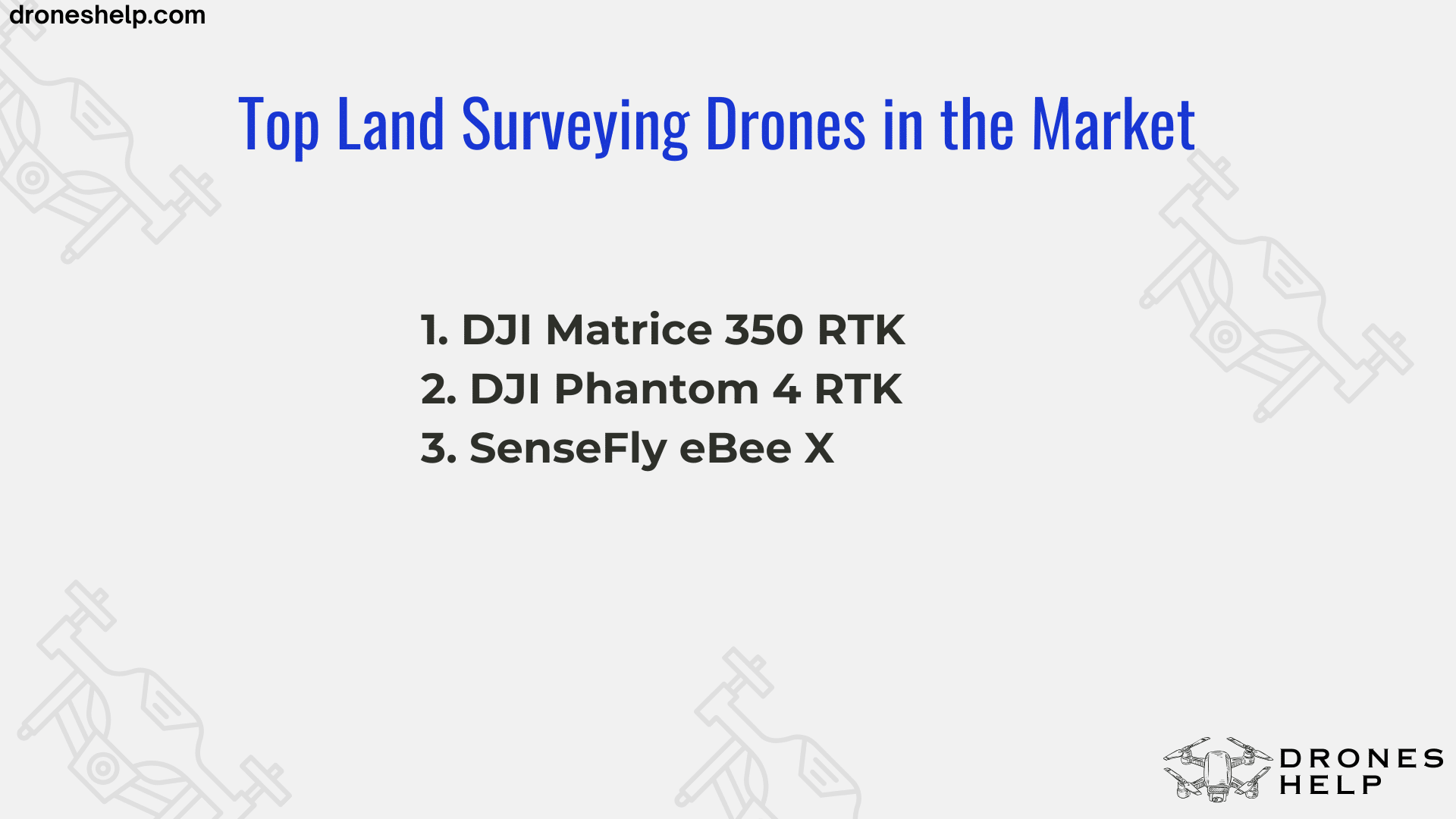
Several land surveying drones stand out for their high-resolution imaging, durability, and ability to produce accurate point clouds. Below, we’ll review some of the top choices.
1. DJI Matrice 350 RTK
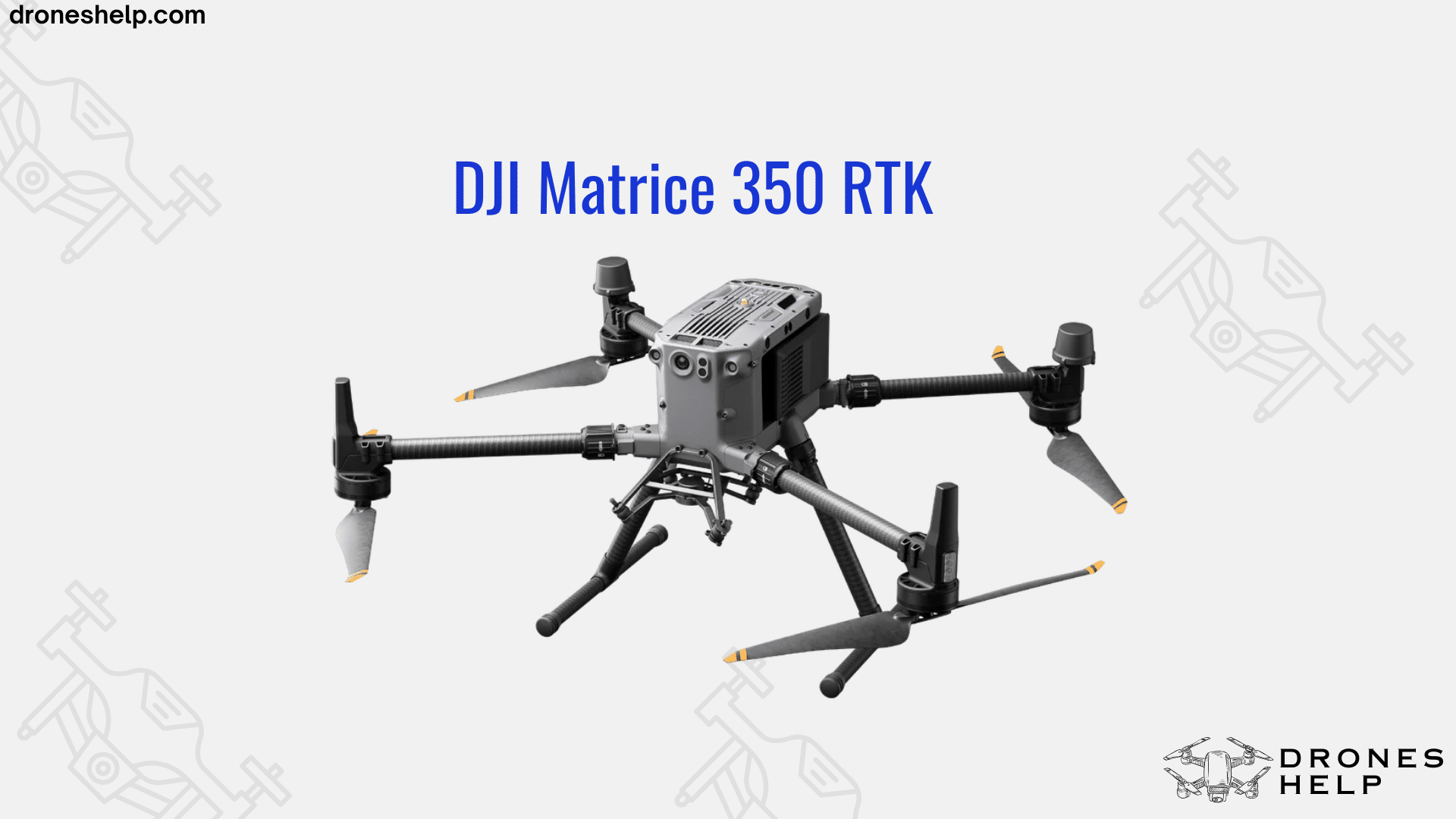
The Matrice 350 RTK is a powerhouse in the world of land surveying drones. Known for its real-time kinematic positioning. The Matrice 350 RTK is designed to capture high-resolution data with centimeter-level accuracy, making it ideal for topographic surveying. Equipped with multiple sensors and a high-quality camera. This drone excels at site mapping and can capture 3D models for a wide range of surveying with drones applications.
This drone also allows for custom flight path planning, ensuring consistent data capture that is critical for 3D mapping and point cloud creation. For project managers in the construction industry, the Matrice 350 RTK is an invaluable tool for site surveys and mapping and surveying.
2. DJI Phantom 4 RTK
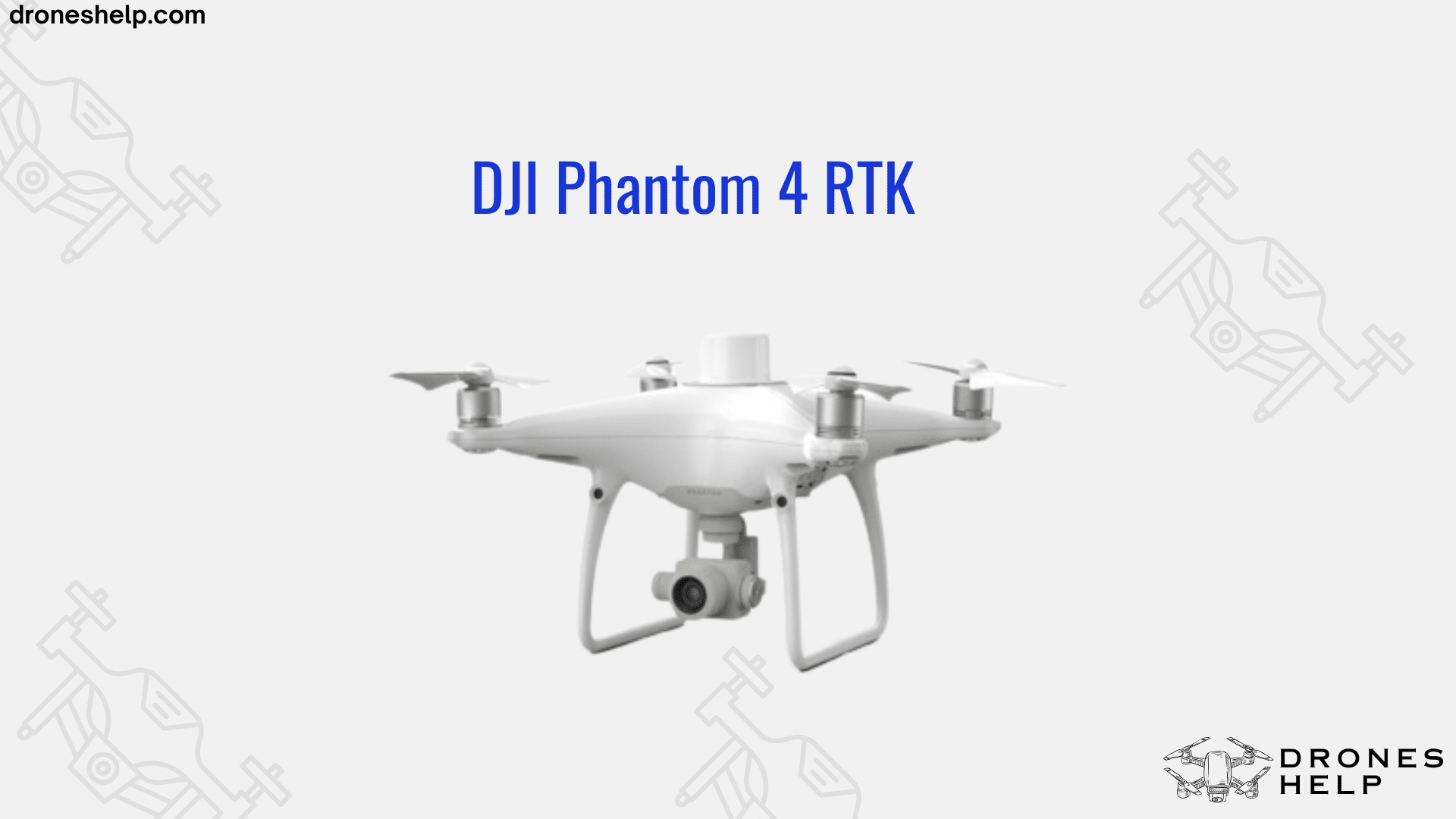
The Phantom 4 RTK is one of the best drones for land surveying because of its compact design and powerful high-resolution camera. Its RTK module allows it to perform real-time positioning, enabling precise topographic surveying without the need for extensive ground control points. This drone is popular for site mapping and drone topographic applications due to its simplicity and accuracy.
Not only does the Phantom 4 RTK capture detailed 3D models of landscapes. But its data can also be integrated into point cloud software, creating accurate digital representations of the terrain. This drone’s ease of use and reliability make it a top choice for project managers seeking accurate, real-time insights.
3. SenseFly eBee X
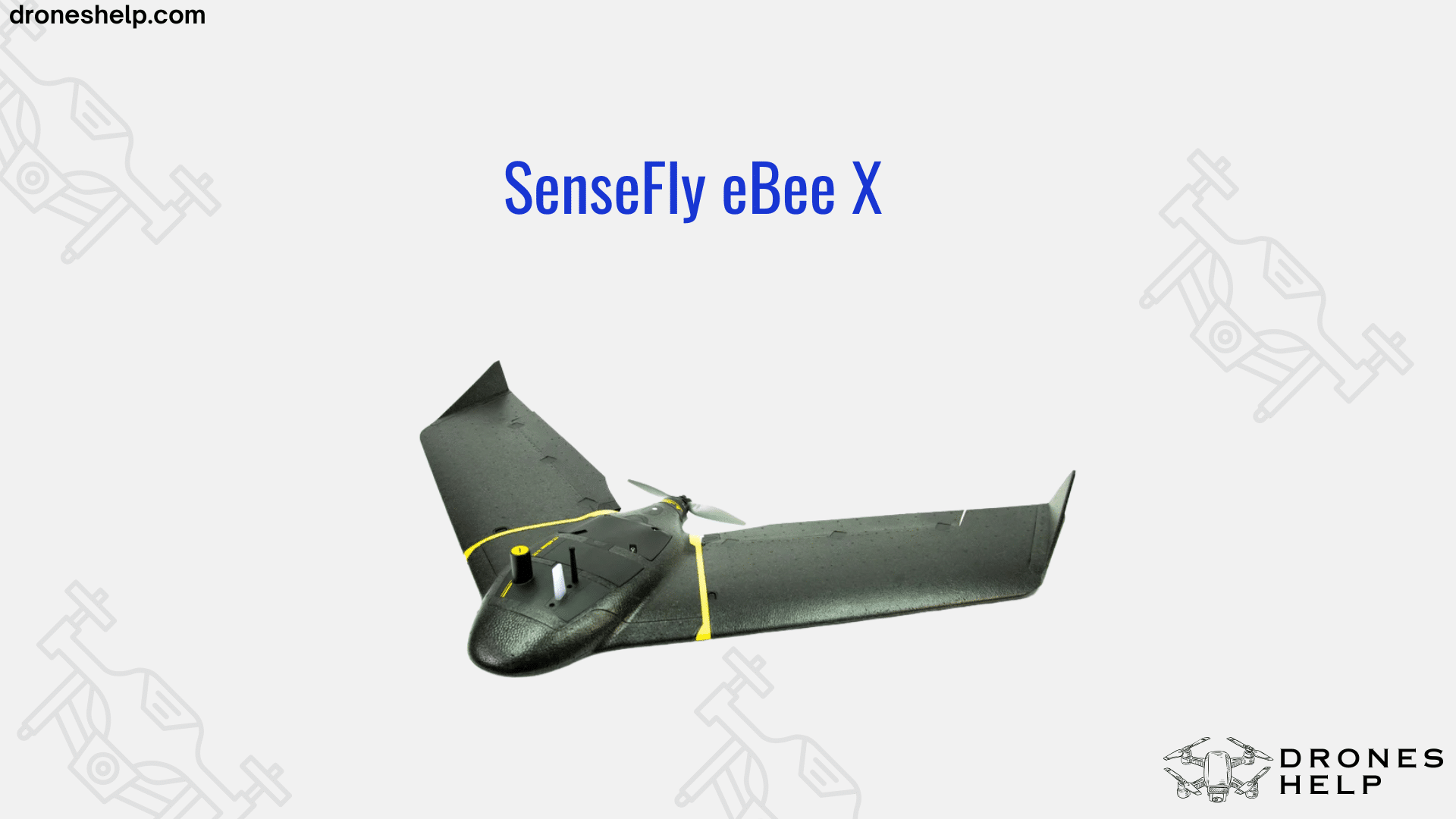
Another notable choice in the world of land surveying drones is the senseFly eBee X. This fixed-wing drone is designed to cover larger areas with fewer flights, making it perfect for large-scale site mapping projects. Equipped with multiple payload options, the eBee X can capture data in various formats, making it highly versatile for drone surveying for construction.
The eBee X is known for its high-resolution cameras and ability to capture point clouds for 3D mapping and topographic surveying. Its versatility and data quality make it an excellent tool for land surveying, especially when traditional ground-based equipment may be too time-consuming or challenging to use.
Key Features to Look For in a Land Surveying Drone
When selecting the best drone for land surveying, consider the following essential features to ensure optimal results:
High-Resolution Imaging: Drones with high-resolution cameras can capture detailed images, enabling the creation of accurate 3D models.
RTK/GNSS Capability: Real-time kinematic (RTK) or GNSS capabilities are crucial for achieving precise positioning, essential for topographic surveying and site mapping.
Customizable Flight Paths: The ability to customize flight paths ensures that the captured data is consistent and reliable, essential for producing point clouds and digital terrain models.
Battery Life and Range: Long battery life and extended range are valuable for covering large areas, reducing the need for multiple flights in expansive mapping and surveying projects.
How Drones Are Changing the Future of Land Surveying
The evolution from traditional survey methods to drone technology has significantly reduced the time, cost, and labor involved in land surveying. Where traditional survey techniques would have required extensive manpower, land surveying drones can now perform these tasks autonomously. This shift is not only beneficial for project managers but also impacts the accuracy and quality of data in the construction industry.
By creating 3D models and point clouds with high-resolution imaging, land surveying drones are enabling more detailed site surveys and drone surveying for construction projects. The insights gathered from drone topographic mapping can be used for tasks like earthwork calculations, slope analysis, and vegetation assessment. All while ensuring safety for personnel on-site.
Conclusion
Summing up everthing that has been discussed so far land drones are reshaping the world by capturing and delivering real-time data. In a world where accuracy and efficiency are paramount. Land surveying drones have proven to be game-changers for mapping and surveying. From generating point clouds to creating 3D models and managing flight paths. Drones like the Matrice 350 RTK and Phantom 4 RTK have raised the bar for topographic surveying and site mapping. For project managers and surveyors alike. The benefits of drone surveying for construction are clear. The faster results, safer operations, and data that can be analyzed in real-time.
As drone technology continues to evolve, so will its applica


